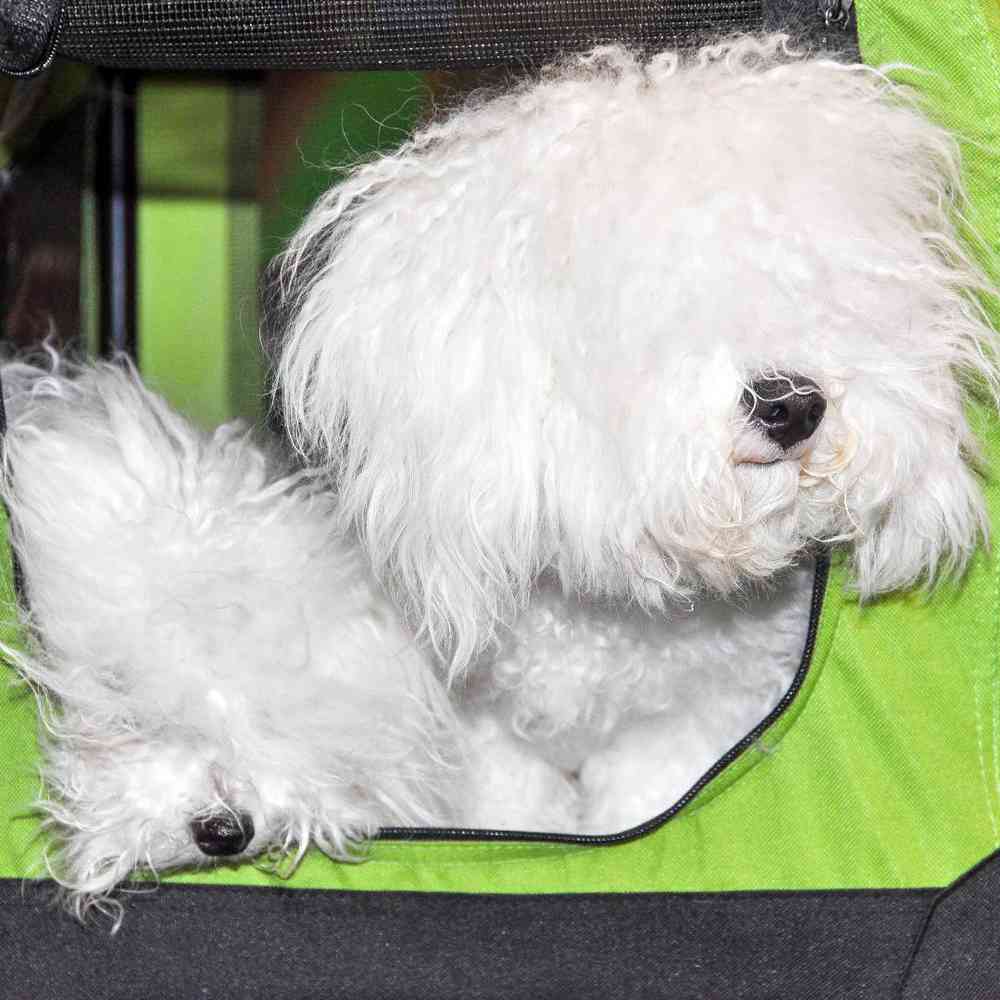Group
Foundation Stock Service
Temperament
Playful, Easy-Going, Devoted
About
The Bolognese is small, stocky, and squarely built. He is rather serene and inactive, and devoted to his master and his people. They can be shy towards strangers, but warm up quickly if they are properly socialized. Prone to separation anxiety, the Bolognese does not do well alone for long periods of time. They would be ill-suited for people with a 9-5 workday. Bolos are an old breed, known by royals and noblemen in Roman times, and were given as precious gifts between the wealthy and powerful.
History
The Bolognese was developed centuries ago in Bologna, Italy, and it is written that they were already valued in Italy as early as the Eleventh and Twelfth centuries. Because of its beauty, grace and charm, it became a favorite of the nobility during the Renaissance. King Umberto of Italy gave a beautiful little Bolognese to Princess Jose of Belgium on her birthday. Also, in 1668 Cosimo de Medici sent eight Bolognese by royal courier and asked his friend Colonel Alamanni in Belgium that these be given as gifts to several of the wealthy and influential families of Brussels. As time passed and the nobility passed along with it, the Bolognese went almost extinct. A few breeders in Europe, however, and especially one man in Italy, Gian Franco Giannelli, who loved the breed, restored it to its present-day popularity. The breed was brought into England by Liz Stannard in 1990 and first shown that year in Imported Register classes. In 2001, the breed was able to be shown at all shows with their own classes and, in 2002, they were at Crufts dog show for the first time.
Standard
Small size, stocky and compact, covered with a pure white coat, long and fluffy. Important proportions: Square built, the length of the body being equal to the height at the withers. Length of head reaching 1/3 of the height at the withers. Depth of chest almost half of the height at the withers.
Nutrition
The Bolognese should do well on a high-quality dog food, whether commercially manufactured or home-prepared with your veterinarian’s supervision and approval. Any diet should be appropriate to the dog’s age (puppy, adult, or senior). Some dogs are prone to getting overweight, so watch your dog’s calorie consumption and weight level. Treats can be an important aid in training, but giving too many can cause obesity. Learn about which human foods are safe for dogs, and which are not. Check with your vet if you have any concerns about your dog’s weight or diet. Clean, fresh water should be available at all times.
Grooming
Bolos would make great apartment dogs, provided they would still have a moderate exercise schedule. As a calm, easygoing dog, they would do well as companions for retirees and seniors. Options for exercise could include play time in the backyard, preferably fenced, or taken for walks. Indoor entertainment, like hide-and-seek, chasing a ball rolled along the floor, or teaching them new tricks are excellent low-key activities for the low-energy, but playful, Bolognese.
Exercise
Small dog breeds, such as the Bolognese, can be prone to “small dog syndrome.” This is a human-induced behavior where the dog thinks he is the “pack leader” to humans and can lead to separation anxiety and timidity. Those wishing to own a Bolognese can gain the knowledge they need to know to prevent or correct this behavior.
Training
The majority of Bolognese are healthy dogs, and a responsible breeder will screen breeding stock for health conditions such as luxating patellas (compared to “trick knee” in humans) and eye anomalies. Good breeders utilize health screening and genetic testing to reduce the likelihood of disease in their puppies.



